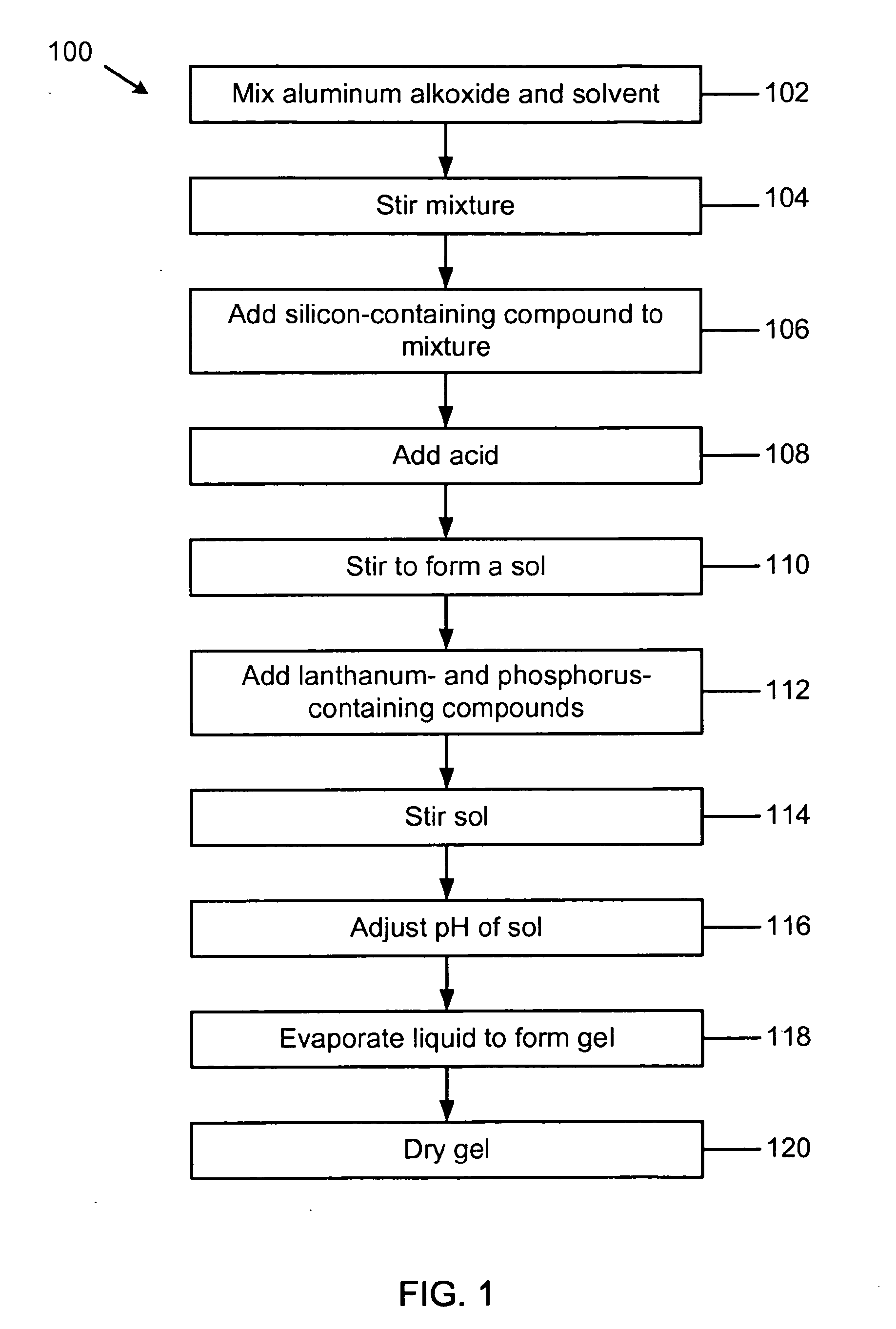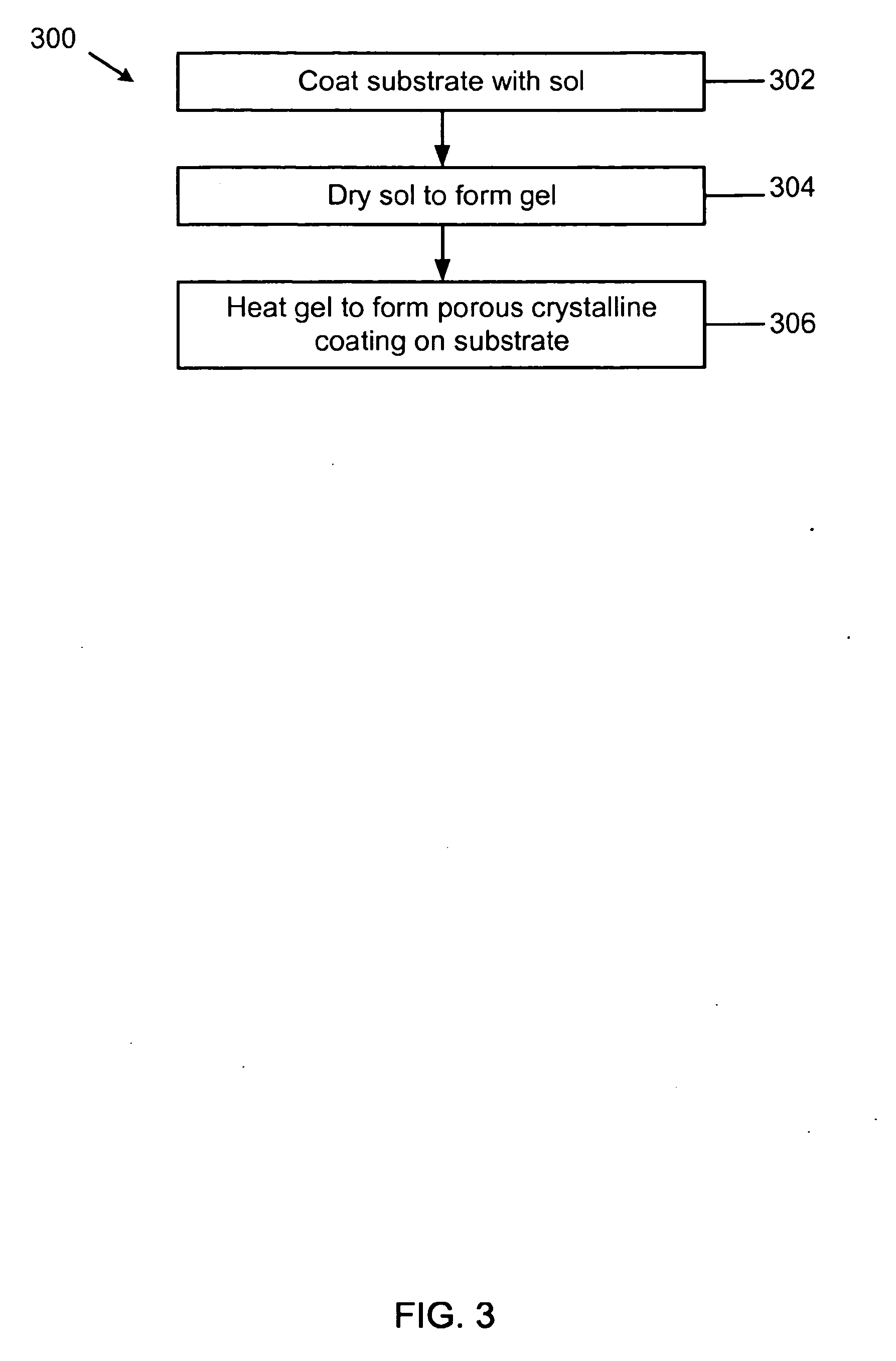Refractory Porous Ceramics
a technology of porous ceramics and ceramics, applied in the field of refractory porous ceramics, can solve the problems of high chemical and dimensional stability, high cost, and high cost of ceramics with high porosity
- Summary
- Abstract
- Description
- Claims
- Application Information
AI Technical Summary
Benefits of technology
Problems solved by technology
Method used
Image
Examples
Embodiment Construction
[0017]A refractory, porous ceramic composite including crystalline mullite (3Al2O3.2SiO2 or 3Al6Si2O11) and a crystalline phase of LaPO4 is formed from a mullite-LaPO4 sol-gel by annealing the dried gel (e.g., by modifying a sol-gel to form a gel, and annealing the dried gel). During the annealing process, particle sintering and self-foaming occur in the glassy state, and pores are produced due at least in part to the release of entrapped gases that form during the pyrolysis of the gel. The resulting crystalline composite, or crystalline nanocomposite, has a porosity between about 65% and about 90% and is dimensionally and chemically stable at high temperatures. The composite also has a high degree of structural (e.g., mechanical) stability, related at least in part to the fine texturing and mixing of the mullite and LaPO4 during preparation of the sol. The resulting ceramic composite shows little or no shrinkage or expansion between about 1000° C. and about 1200° C.
[0018]Preparatio...
PUM
| Property | Measurement | Unit |
|---|---|---|
| Temperature | aaaaa | aaaaa |
| Temperature | aaaaa | aaaaa |
| Temperature | aaaaa | aaaaa |
Abstract
Description
Claims
Application Information
 Login to View More
Login to View More - R&D
- Intellectual Property
- Life Sciences
- Materials
- Tech Scout
- Unparalleled Data Quality
- Higher Quality Content
- 60% Fewer Hallucinations
Browse by: Latest US Patents, China's latest patents, Technical Efficacy Thesaurus, Application Domain, Technology Topic, Popular Technical Reports.
© 2025 PatSnap. All rights reserved.Legal|Privacy policy|Modern Slavery Act Transparency Statement|Sitemap|About US| Contact US: help@patsnap.com



